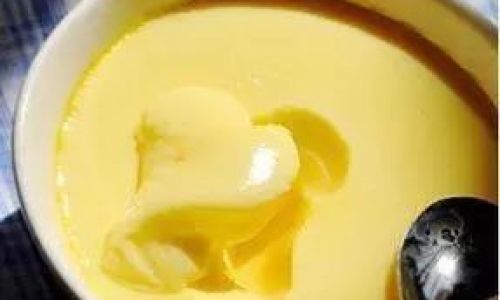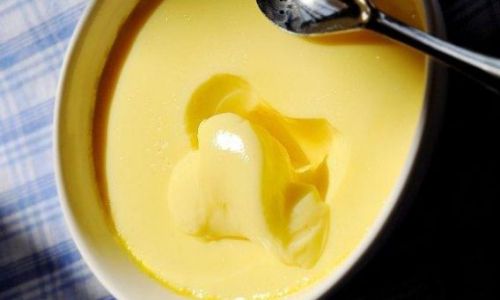Introduction
In the realm of baby food, simplicity and nutrition often go hand in hand. As parents strive to introduce solid foods to their infants, they seek recipes that are not only easy to prepare but also packed with essential nutrients. One such culinary gem is the infant-friendly steamed egg custard, a delicate and nutritious dish that has been a staple in many households for generations. This article delves into the art of crafting a perfect baby-friendly steamed egg custard, highlighting the ingredients, preparation methods, nutritional benefits, and tips for making this dish a delightful addition to your child’s diet.
Understanding the Ingredients
The foundation of any good steamed egg custard lies in its simplicity. For the infant version, we focus on a minimal ingredient list to ensure it’s gentle on your baby’s developing digestive system. Here’s what you’ll need:

- Eggs: Preferably large, free-range eggs. The yolk is particularly rich in nutrients like choline, which is crucial for brain development.
- Milk: Whole milk or formula milk can be used. The milk adds creaminess and additional nutrients like calcium and vitamin D.
- Water: Purified or distilled water to thin out the mixture, making it easier for babies to swallow.
- A Pinch of Salt (Optional): Salt enhances flavor, but it’s optional, especially if you’re concerned about your baby’s sodium intake.
For older infants who can tolerate a wider range of flavors, you might consider adding a drop of vanilla extract or a sprinkle of cinnamon, but always consult with your pediatrician first.
Preparing the Mixture
-
Egg Separation: Begin by separating the egg yolk from the white. For infants just starting on solids, it’s best to use only the yolk initially, as the white can be harder to digest. You can save the whites for other recipes or use them once your baby’s digestive system matures.
-
Mixing: In a bowl, gently whisk the egg yolk until it’s smooth. Avoid over-mixing, which can incorporate too many air bubbles into the mixture.
-
Diluting: Gradually add milk and water to the egg yolk, using a ratio of approximately one part egg yolk to two parts liquid (milk and water combined). This ratio ensures a tender, not-too-firm texture that’s easy for babies to handle.
-
Seasoning: If using salt, add a pinch now and mix well. Remember, less is more when it comes to seasoning baby food.
-
Straining: Pass the mixture through a fine-mesh sieve to remove any lumps or air bubbles. This step is crucial for achieving a smooth, silky texture.
Steaming the Custard

-
Preparing the Steamer: Fill a pot with a few inches of water and bring it to a gentle simmer. You can use a traditional bamboo steamer, a metal steam basket, or even a colander placed over the pot. The key is to create an environment where the mixture can steam evenly without direct contact with boiling water.
-
Pouring the Mixture: Pour the strained egg mixture into a heatproof ramekin or a small bowl. Cover the bowl with a lid or aluminum foil to prevent condensation from dripping into the custard and creating unsightly marks.
-
Steaming: Place the bowl in the steamer and let it cook over medium-low heat for about 8-10 minutes, or until the custard is set but still slightly jiggly in the center. The cooking time may vary depending on the size of your bowl and the intensity of your heat, so it’s best to keep an eye on it.
-
Cooling: Once done, remove the bowl from the steamer and let it cool slightly before serving. Be cautious of the steam and hot surfaces.
Serving and Enjoying
-
Temperature Check: Always test the temperature of the custard before feeding it to your baby. It should be warm, not hot, to avoid burning their mouth.
-
Portion Size: Start with small portions and gradually increase as your baby’s appetite grows. Remember, babies have small stomachs and need frequent, smaller meals.
-
Presentation: You can garnish the custard with a touch of fruit puree or a sprinkle of fresh herbs for added color and flavor, but keep it simple and avoid any choking hazards.

-
Storage: Leftovers can be stored in an airtight container in the refrigerator for up to 2 days. Reheat gently before serving to avoid overcooking.
Nutritional Benefits
The infant-friendly steamed egg custard is a nutritional powerhouse, offering a range of benefits tailored to your baby’s growing needs:
- High-Quality Protein: The egg yolk is an excellent source of high-quality protein, essential for muscle and tissue development.
- Essential Fatty Acids: The yolk also contains healthy fats, including choline and omega-3 fatty acids, which support brain and eye development.
- Calcium and Vitamin D: The milk component provides these bone-building nutrients, promoting strong teeth and bones.
- Easy to Digest: The steamed preparation method makes the custard soft and easy to swallow, ideal for babies transitioning from purees to solid foods.
Tips for Success
- Consistency Matters: The consistency of the custard should be smooth and creamy, not too runny or too firm. Adjust the liquid ratio if necessary based on your baby’s preference and age.
- Allergy Awareness: Always be mindful of potential food allergies. If your baby has a known allergy to eggs or dairy, consult with a healthcare provider before introducing this dish.
- Gradual Introduction: Introduce new foods one at a time, spacing them out by a few days, to monitor for any allergic reactions.
- Hygiene: Ensure all utensils and surfaces are clean to avoid any foodborne illnesses.
- Patience: Babies may take time to get used to new textures and flavors. Be patient and offer the custard multiple times if your baby initially rejects it.
Conclusion
Crafting a perfect baby-friendly steamed egg custard is not just about following a recipe; it’s about nurturing your child’s growth and development through every bite. By focusing on simple, nutritious ingredients and careful preparation, you can create a dish that’s not only delicious but also packed with essential nutrients tailored to your baby’s needs. As your baby grows and their palate expands, you can experiment with variations and flavors, always keeping their health and well-being at the forefront. Remember, the joy of feeding your baby lies not just in the food itself but in the bond and love shared during mealtimes. Happy cooking, and happy feeding!





0 comments